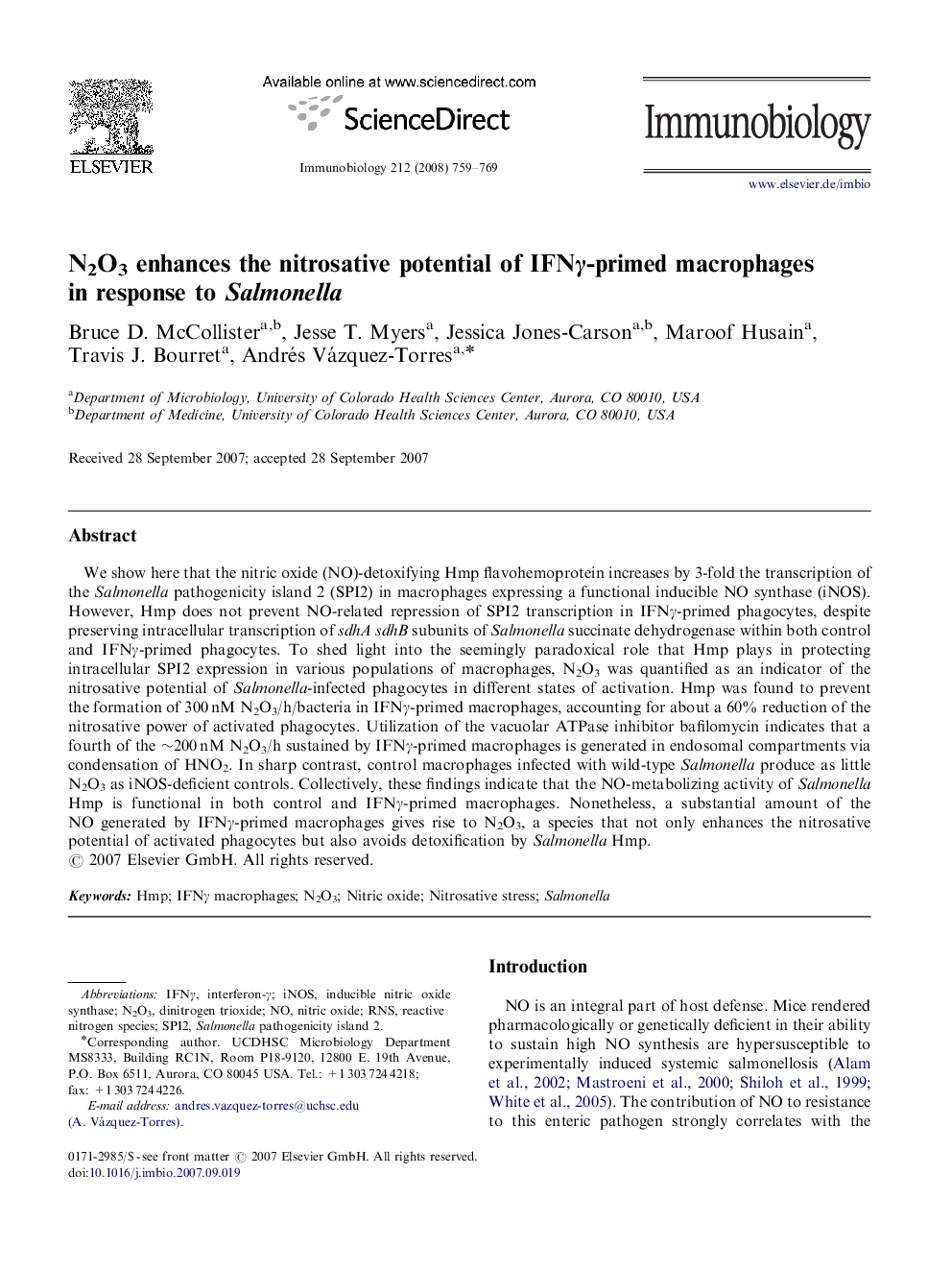| Article ID | Journal | Published Year | Pages | File Type |
|---|---|---|---|---|
| 2183915 | Immunobiology | 2008 | 11 Pages |
We show here that the nitric oxide (NO)-detoxifying Hmp flavohemoprotein increases by 3-fold the transcription of the Salmonella pathogenicity island 2 (SPI2) in macrophages expressing a functional inducible NO synthase (iNOS). However, Hmp does not prevent NO-related repression of SPI2 transcription in IFNγ-primed phagocytes, despite preserving intracellular transcription of sdhA sdhB subunits of Salmonella succinate dehydrogenase within both control and IFNγ-primed phagocytes. To shed light into the seemingly paradoxical role that Hmp plays in protecting intracellular SPI2 expression in various populations of macrophages, N2O3 was quantified as an indicator of the nitrosative potential of Salmonella-infected phagocytes in different states of activation. Hmp was found to prevent the formation of 300 nM N2O3/h/bacteria in IFNγ-primed macrophages, accounting for about a 60% reduction of the nitrosative power of activated phagocytes. Utilization of the vacuolar ATPase inhibitor bafilomycin indicates that a fourth of the ∼200 nM N2O3/h sustained by IFNγ-primed macrophages is generated in endosomal compartments via condensation of HNO2. In sharp contrast, control macrophages infected with wild-type Salmonella produce as little N2O3 as iNOS-deficient controls. Collectively, these findings indicate that the NO-metabolizing activity of Salmonella Hmp is functional in both control and IFNγ-primed macrophages. Nonetheless, a substantial amount of the NO generated by IFNγ-primed macrophages gives rise to N2O3, a species that not only enhances the nitrosative potential of activated phagocytes but also avoids detoxification by Salmonella Hmp.
